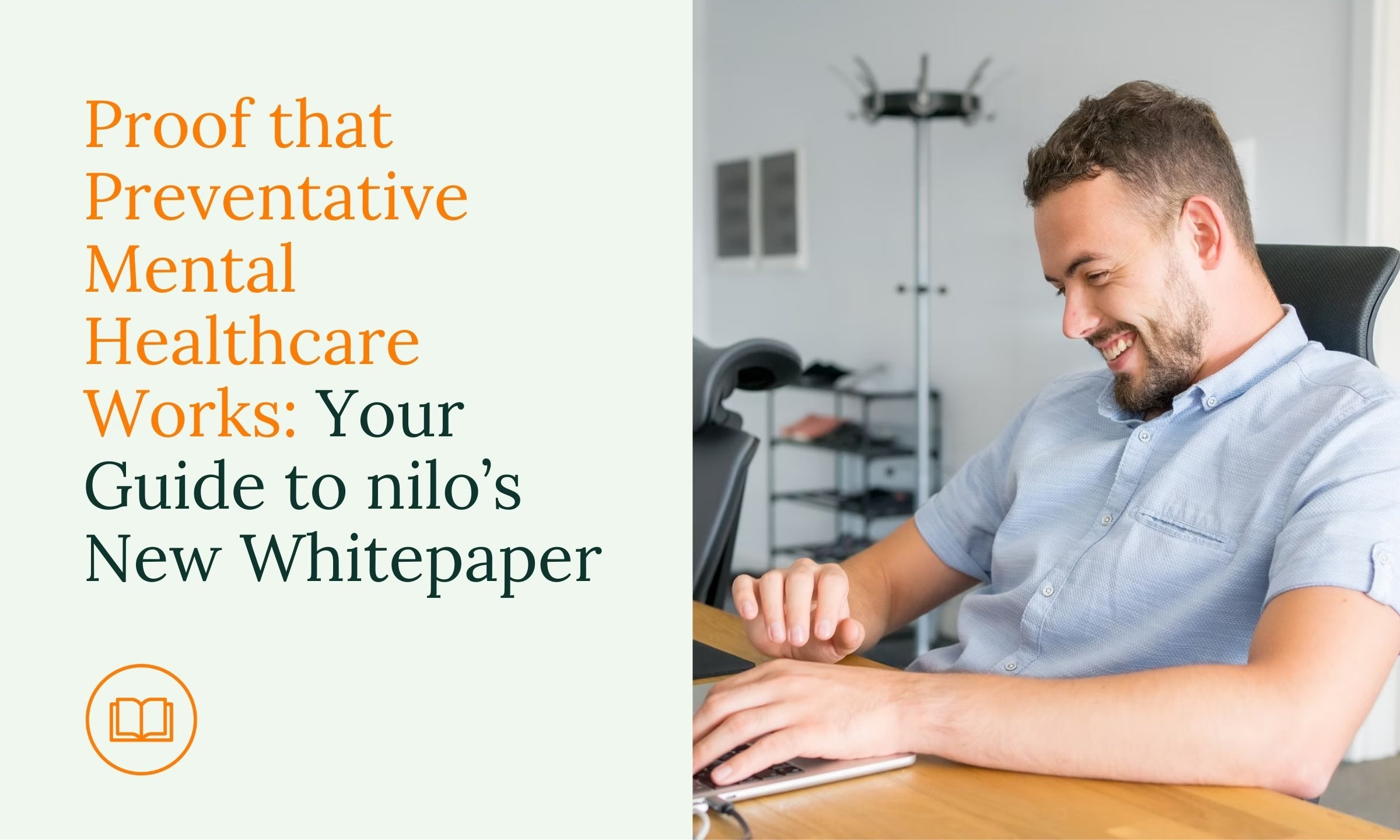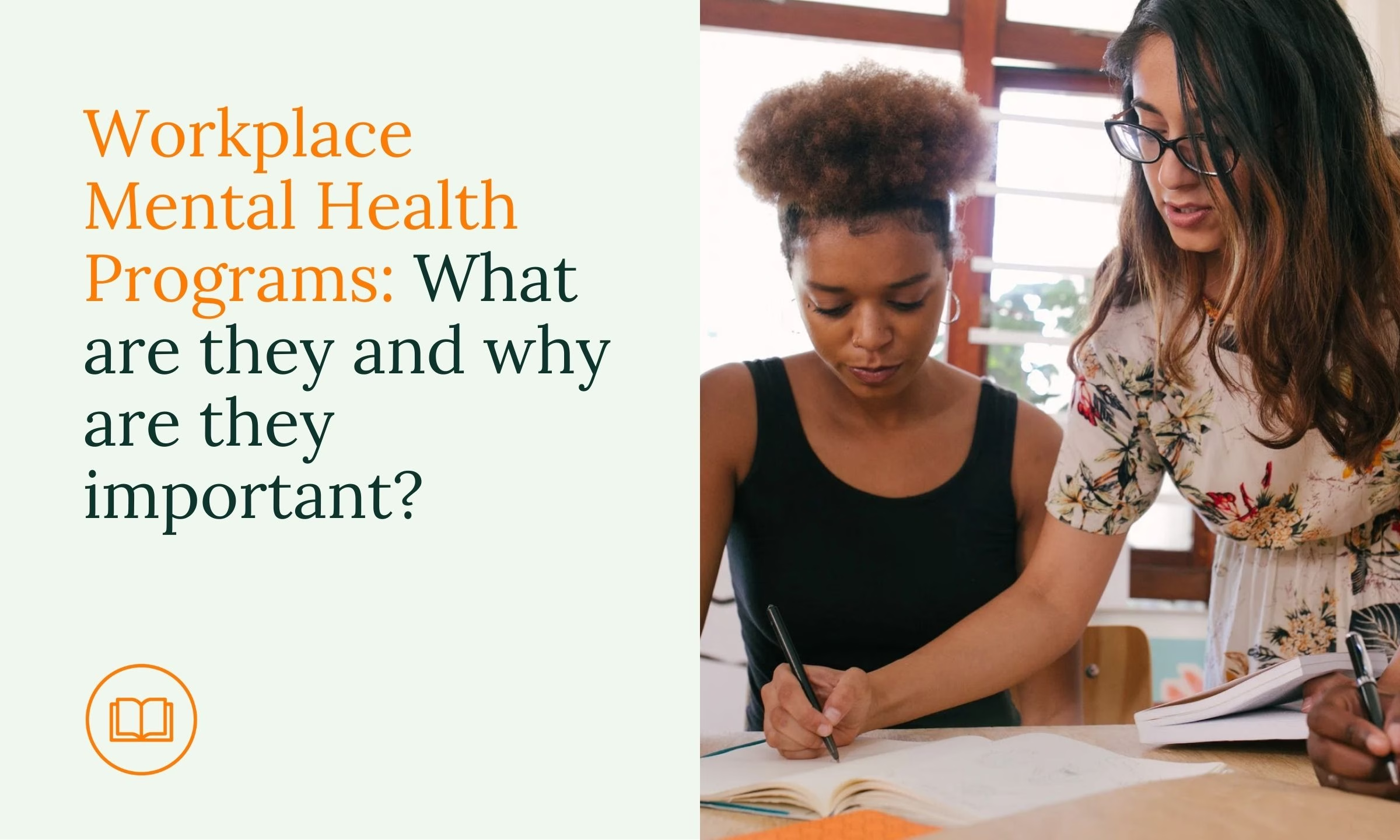Mental health is a science, and we need data to understand it. In our annual whitepaper, we conducted a full clinical study of nilo.health users to better understand the efficacy and strategies of mental health support.

We looked at people with both moderate and severe mental health symptoms. Using clinical studies, we discovered that across both groups, mental health and well-being scores went up after using nilo.health, and anxiety and depression scores went down.
We also studied self-reported data that showed improvement for nilo.health users in sleep, motivation, energy, mood and more.
You can read the full whitepaper here. But because a whitepaper is a scientific and academic study based on complicated data, we wanted to break it down for you in an accessible and easy-to-digest way. Read on for all the highlights of our whitepaper!
Contents
- How did we write the whitepaper?
- Whose data is in the whitepaper?
- What were the clinical results for severe users?
- What were the clinical results for moderate users?
- What were the self-reported results?
- Why do these results show the importance of preventative mental health support?
- What does the whitepaper mean for HR leaders?
How did we write the whitepaper?
The whitepaper is written by our Head of Psychology, Dr. Katharina Koch. Katharina based the whitepaper on two standardized clinical measures, the PHQ and the WHO-5, which measure anxiety, depression and general well-being. She also measured data through a range of user self-assessments which considered elements like stress levels, sleep, motivation and energy.
For more about the process behind writing the whitepaper, check out Katharina’s latest round of FAQs!
Whose data is in the whitepaper?
The whitepaper explores the results of 798 nilo.health users — and yes, of course they chose to participate in the study! These nilo.health users come from all walks of the workplace. Some are managers, some are junior employees. We studied senior leadership, mid-level employees and more, to make sure we had a good picture of the breadth of a company.
We grouped participants based on the level of mental health symptoms they were experiencing. Some participants were in a ‘severe’ group: these people struggle with daily functioning as a result of poor mental health, i.e. depression, anxiety, burnout and more.
But most participants fell into the ‘moderate’ group. You might even recognize yourself in this group. These participants have some mental health issues; for example, they feel some level of stress, or might have trouble sleeping now and then, or get anxious around specific times and issues. Because these participants aren’t struggling with day-to-day life, they’re much less likely to get treatment for their mental health issues. We were curious about how nilo.health might help this group anyway.
So let’s break down the results for you!
What were the clinical results for severe users?
The severe group’s PHQ-4 scores decreased significantly over time as the severe users engaged with their nilo.health benefit. Their results decreased from a mean score which the PHQ-4 scale categorizes as “severe” to a score categorized as “moderate”. This means that depression and anxiety went down, and users had effectively moved out of the severe symptom group and into a moderate symptom group.
The WHO-5 works on an opposite spectrum of grading; while with the PHQ-4 score, we want to see scores decrease (indicating less depression and anxiety), for the WHO-5 score, we want to see scores increase (indicating better well-being). A score of 28 or below is indicative of depression. Over the course of the study, severe users saw their WHO-5 mean score rise from 23.68 (indicating depression) to 44.8 — a huge improvement.
This was a wonderful result for people really struggling with their mental health.
What were the clinical results for moderate users?
The results for moderate users were also extremely interesting — and dramatic. We also saw a PHQ-4 score decrease, and a WHO-5 score increase. On the WHO-5 score, participants’ mean score increased from 46.8 (which is categorized as “poor well-being”) to 54.36: now classified as “average well-being” or better.
The reason this was particularly interesting for us is that it shows treatment works even at a moderate symptom level. The self-reported scores below also add to that picture.
What were the self-reported results?
Both severe and moderate users reported huge improvement in their self-reported results.
In the severe group:
- 67.36% said their moods improved
- 53.3% said their sleep improved
- 69.1% said their relaxation levels improved
- 51.5% said their motivation improved
- 60.9% said their energy levels improved
In the moderate group:
- 50.4% said their mood improved
- 49.8% said their sleep improved
- 57.6% said their relaxation levels improved
- 44.3% said their motivation improved
- 50.5% said their energy levels improved
Why do these results show the importance of preventative mental health support?
The importance of preventative mental health support is one of the most powerful takeaways from our whitepaper.
Mental health is a spectrum. On one end, you have the happy situation where your well-being is high and you feel strong and resilient. On the other end, you might be suffering a mental health crisis or even a disease. Most of us are somewhere in the middle, dealing with some issues but also enjoying our lives. Big life events, both happy and sad, might push us one way or another.
These results show that paying attention to our mental health — taking care of ourselves with things like talk therapy or self-guided exercises — helps us improve, even when we don’t feel like things are particularly terrible. And they mean that we can solve problems when they first arise, before they become a crisis. We can avoid manifesting symptoms of mental distress, or developing unhealthy patterns. It also means that when crises do erupt, we already have a base to deal with them: we’ve already been building our resilience and well-being.
What does the whitepaper mean for HR leaders?
As part of our study, Katharina conducted a Pearson correlation analysis, to explore the relationships between anxiety and depression (in the PHQ-4 scores) and performance-related variables, including absence days, unproductive days, and work disruption ratings. She found significant positive correlation between absence days and PHQ-4 scores, showing that higher levels of anxiety and depression are associated with more frequent absences from work. She also found correlations between unproductive days and work disruption days with the PHQ-4 scores.
It’s obvious and now it’s backed up in evidence, too: If you’re feeling unhappy, you’re unlikely to be working at your best. So providing employee mental health support is a great way to boost your team’s well-being and your company’s performance at the same time.
This whitepaper is proof that workplaces can act and support their employees early on by providing access to early interventions and preventative care. It means that as a HR leader, you won’t always be responding to crisis, but instead building a strong, resilient workforce.
Ready to make a difference in your company? Book your nilo.health demo today.






